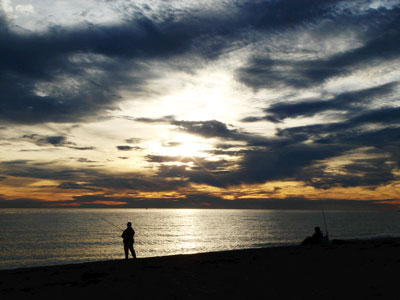All Nonfiction
- Bullying
- Books
- Academic
- Author Interviews
- Celebrity interviews
- College Articles
- College Essays
- Educator of the Year
- Heroes
- Interviews
- Memoir
- Personal Experience
- Sports
- Travel & Culture
All Opinions
- Bullying
- Current Events / Politics
- Discrimination
- Drugs / Alcohol / Smoking
- Entertainment / Celebrities
- Environment
- Love / Relationships
- Movies / Music / TV
- Pop Culture / Trends
- School / College
- Social Issues / Civics
- Spirituality / Religion
- Sports / Hobbies
All Hot Topics
- Bullying
- Community Service
- Environment
- Health
- Letters to the Editor
- Pride & Prejudice
- What Matters
- Back
Summer Guide
- Program Links
- Program Reviews
- Back
College Guide
- College Links
- College Reviews
- College Essays
- College Articles
- Back
Economic Effects of Indian River Lagoon Pollution
The Indian River Lagoon is one of Central Florida’s most stunning natural landscapes. Stretching from Ponce de Leon Inlet to Jupiter Inlet, the waterway is not important to the region's ecosystem, but is also relied upon by thousands of people as a way to make money. Some people say methods to cleanse the Indian River Lagoon would be too expensive to pursue, but if we keep polluting the lagoon at this rate, Florida will lose money from fishing, tourism, and recreational activities in the area.
If local governments want to cleanse the lagoon, the costs need to be considered first. A cleansing project could end up costing about $1.4 billion over 15 years. Many say this is simply too much money to spend. Of course, that is a lot of money, but these people do not realize that cleaning up the lagoon would pay for itself in a number of years. For instance, we need to limit the amount of nitrogen and phosphorus that enter the lagoon in order to not kill seagrass, which is incredibly important for maintaining the fish population of the lagoon. Cleansing the Lagoon, though initially costly, would ultimately result in a net gain in revenue for the local economy.
One of the most important contributions of the Indian River Lagoon on Central Florida's economy is made through commercial fishing. Fish catches from the Indian River Lagoon account for “nearly 15% of the national fish and shellfish harvest" each year. The volume of catches is incredible considering that the Lagoon does not even take up the whole eastern coast of Florida. The fish catches also represent a huge contribution to the local economy. Commercial fishing in the IRL generates about $140 million dollars per year, a gigantic contribution to the local economy. However, more and more pollution of the IRL from surrounding areas, some of the fish we catch and sell are being killed off. In August of 2014, hundreds of fish, including mullet, washed up dead on the shores of the IRL. The Florida Fish and Wildlife Conservation Commission says this was because of a toxic algae bloom. The main cause of algae blooms is runoff from areas around the waterway. If residents of the area apply fertilizers to their lawns, rain may then wash the fertilizer off the land and into a waterway, in this case, the Indian River Lagoon. The nitrogen and phosphorus in the fertilizer then “feed” the algae and cause a bloom. If people keep using so much fertilizer, more and more fish will be killed, and as a result, the Central Florida economy will suffer.
Another important contribution of the Indian River Lagoon on the local economy is provided by tourism. This aspect was addressed by Florida governor Rick Scott in August 2013. According to his presentation, over 20,000 jobs are supported by hotel and motel staff in the Indian River Lagoon area, In addition, the total sum of revenue from visitations to beaches and public parks on the east coast of Florida is about $115 million annually. Clearly, tourism is very important to the economy of Central Florida. However, due to pollution of the IRL, some of the main attractions for eco-tourists are dying off, especially dolphins. Dolphins are one of the most iconic animals of the Indian River Lagoon. In fact, visitors pay to go on tours that focus of spotting dolphins in the lagoon. However, pollution of the area has caused the population of this main tourist attraction to be in trouble. During the summer of 2008, 43 dolphins died in the Indian River Lagoon and in 2009, 48 dolphins died. Manatees are being affected as well. In 2013 the IRL experienced the highest manatee mortality rate ever recorded in the state of Florida. If residents of the urban areas surrounding the Indian River Lagoon continue pollute the waterway, there is likely to be a loss in tourism attractions like the bottlenose dolphin and the manatee. Thus, less revenue will be generated by tourism to the area, hurting the Central Florida economy.
In conclusion, although opponents claim that a project to cleanse the Indian River Lagoon of excess pollution would be too expensive to pursue, such a project must be completed in order to avoid significant losses in revenue from commercial fishing, tourism, and recreational activities on the Lagoon. Though most believe the pollution of the Indian River Lagoon to be an important ecological or environmental issue, many do not realize the serious economic implications it imposes on Central Florida as well.

Similar Articles
JOIN THE DISCUSSION
This article has 0 comments.

Captone is life